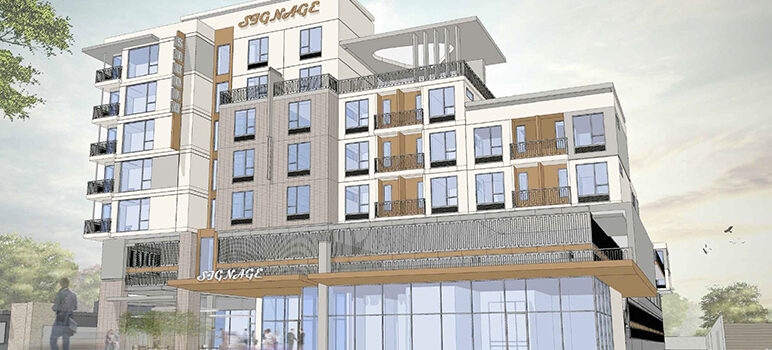Alex Shoor had Tuesday’s San Jose City Council meeting streaming live in the background of his home all day, eagerly awaiting a decision on the 259 Meridian project—which didn’t come up for a vote until the 6 o’ clock hour.
Thankfully, the council’s decision made it well worth the wait.
In a unanimous vote, the 11-member governing body approved the mixed-use, micro-unit housing development slated for Midtown.
As head of Catalyze SV, a nonprofit devoted to building consensus among community members to support new housing development, Shoor celebrated it as a victory.
“We’re excited about it and the council is excited about it,” he told San Jose Inside in a phone call the next day. “One of the important takeaways of why a project like this gets as good as it gets is because the community has a sustained interest in making it better and the developer is willing to listen and make those improvements. That’s what we need more of to benefit the most people possible.”
The project by Strangis Properties and LPMD Architects begins with the demolition of three existing commercial buildings—comprising a combined 19,000 square feet—and a surface parking lot, which would be replaced with 226 residential units and about 1,400 square feet of ground-floor commercial space at 259 Meridian Ave.
The proposed development is one of the first that fits into the city’s West San Carlos Urban Village Plan, a blueprint for future growth that features pedestrian and bike-friendly pathways, easy access to public transit and sustainably dense development.
Shoor called the project a testament to how good things happen when members of the community and developers work together.
Since 2018, he said Catalyze SV members and Strangis Properties had a fruitful back-and-forth discussion, which led to several improvements on the proposal.
Among those improvements is a provision to designate 15 percent of the homes on-site as below market-rate. Because of conversations with the community, the developer also committed to increase the number of trees and pledge to make the landscaping feature native plants. The builders also penciled in a monthly stipend for residents that may be used for services such as transit passes or bike share in exchange for less car parking.


Dear Community,
Its a shame that there is just an Urban Village Zoning Change and not a real Urban Village on Alum Rock Avenue.
This is a great story but the East Valley will not see this because of poor leadership at City Hall and the Departments that dont listen.
Urban Villages that exist have a Printed Plan of over 100 to 250 pages of Outlines and Protections. Congratulations to them.
In the Alum Rock Zoning change – we have “5 pages with each page consisting of a 1/2 sheet of ideas.
Typical Treatment of the Community in the East Valley.
Google my statement, I’m up for debate.
In Community Spirit,
Danny Garza
President
Plata Arroyo Neighborhood Association and N.A.C.
> “One of the important takeaways of why a project like this gets as good as it gets is because the community has a sustained interest in making it better and the developer is willing to listen and make those improvements.
“A camel is a horse designed by a committee.”